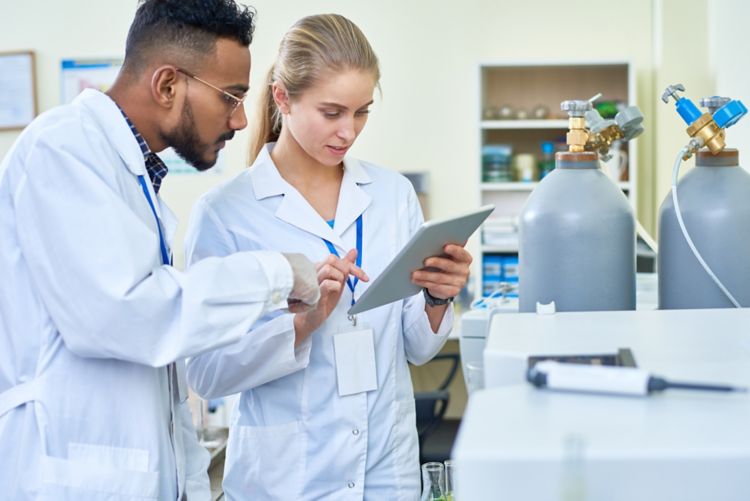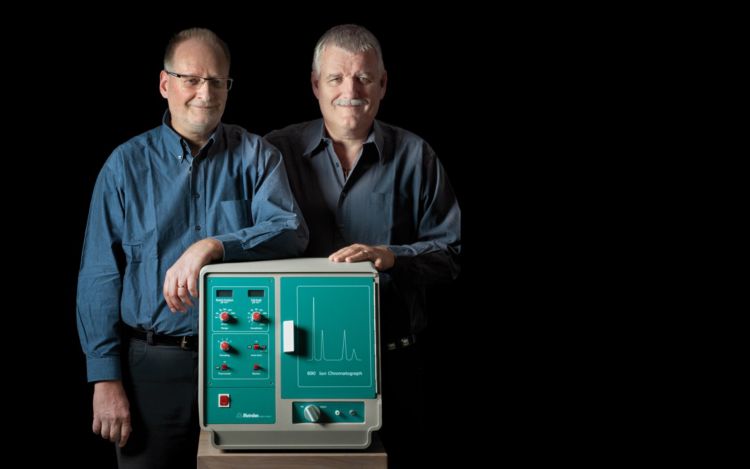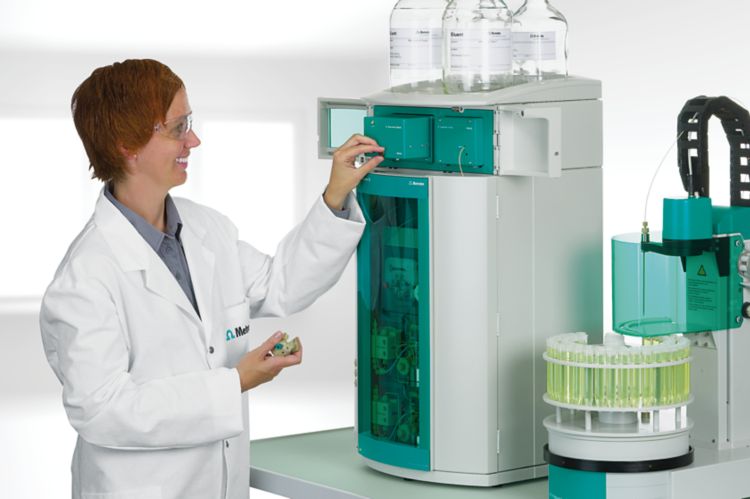Ion chromatography detectors
Superior flexibility: Compatibility with any detection technique
Metrohm ion chromatography (IC) systems are characterized by flexible configuration options. This is also true when it comes to IC detectors from Metrohm. Metrohm offers multiple detectors for conductivity, UV/VIS, and amperometric detection. In addition, Metrohm IC instruments can be hyphenated to mass spectrometers from any brand.
Ion chromatography detectors
Metrohm IC systems can be used with any detection technique
- Routine operation with conductivity detectors, UV/VIS detectors, or amperometric detectors possible
- Hyphenation of Metrohm IC with mass spectrometry to enhance sensitivity and selectivity
- Comprehensive analysis by flexible use of several detectors in series or as hyphenated technique
- Reduction of background conductivity with Metrohm suppression technique for chemical and sequential suppression
Which IC detector do you need?
Depending on your application, each detection method has its particular benefits regarding selectivity and sensitivity. The table below summarizes the benefits and typical applications for each detector type.
| Detector option | Benefits | Typical applications |
|---|---|---|
| Conductivity detector | Benefits:
|
Applications:
|
| Conductivity detector MB | Benefits:
|
Applications:
|
| UV/VIS detector | Benefits:
|
Applications:
|
Amperometric detector |
Benefits:
|
Applications:
|
| Mass spectrometers (ESI-MS, ESI-MS/MS or ICP-MS, ICP-MS/MS) | Benefits:
|
Applications:
|
Learn more about detection techniques in IC
Ion chromatography detectors – FAQs
What type of detector is used in ion chromatography?
Several types of detectors are commonly used in ion chromatography (IC). The type of detector used depends on the analyte to be determined and the sensitivity required for the analysis.
- The conductivity detector is the most widely used detector in ion chromatography. It measures the change in electrical conductivity resulting from the ions passing through the detector. It is suitable for detecting a wide range of ions, including both inorganic and organic ions.
- The conductivity detector with suppression improves the signal-to-noise ratio of the measured signal.
- The UV-Visible or UV/VIS detector measures the concentration of ions that absorb ultraviolet or visible light. It is useful for analyzing compounds that have strong UV absorption, such as aromatic compounds and some inorganic analytes.
- The amperometric detector, or electrochemical detector, employs an electrochemical cell to detect analyte ions based on their redox properties. It is commonly used for the detection of electroactive species, such as metal ions and certain organic compounds.
- Mass spectrometry allows the identification and quantification of analytes based on their mass-to-charge ratio. By coupling ion chromatographs with mass spectrometers (e.g., ESI-MS, IC-MS, IC-MS/MS, or ICP-MS, IC-ICP/MS, IC-ICP/MS/MS) selectivity and sensitivity of the analysis can be increased.
Metrohm offers detectors for conductivity, UV/VIS, and amperometric detection as well as a suppressor module for conductivity detection with suppression. In addition, Metrohm IC instruments can be hyphenated to mass spectrometers of any brand.
How does a conductivity detector work?
A conductivity detector in ion chromatography measures changes in electrical conductivity to detect and quantify ions. Here is how it works:
- The eluent, which is the liquid carrying the sample and ions, flows through a separation column in the ion chromatography system.
- In the separation column, the analytes are separated (anion or cation exchange) and enter time-resolved the conductivity cell. The conductivity cell contains two electrodes with a small voltage applied across the electrodes.
- The presence of ions in the eluent affects the conductivity of the cell. Ions enhance the electrical conductivity of the eluent, causing changes in the electrical current flowing through the cell.
- The changes in electrical conductivity are converted into electrical signals. These signals are typically amplified and sent to a data acquisition system for further processing and analysis.
- The detector response is calibrated using known standards to establish a relationship between the signal generated and the concentration of the analyte ions. This calibration allows for the quantification of the analyte ions in the sample.
How does a UV/VIS detector work?
A UV/VIS detector in ion chromatography measures the absorption of light by compounds in a sample and provides information about their presence and concentration in the sample. Here is how it works:
- The UV/VIS detector consists of a light source that emits a broad spectrum of light, including ultraviolet (UV) and visible (VIS) wavelengths.
- The sample, dissolved in an appropriate solvent, is continuously injected into the chromatography system and carried through a flow cell.
- As the sample flows through the flow cell, it interacts with the light beam emitted by the light source. Some of the wavelengths of light are absorbed by the compounds present in the sample.
- The UV/VIS detector measures the amount of light that passes through the sample (transmittance) rather than being absorbed. It does this by comparing the intensity of the light beam before and after it passes through the sample.
- The detector generates an electrical signal proportional to the amount of light transmitted through the sample. This signal is typically converted into a numerical value or a chromatogram peak, indicating the absorbance of the sample at specific wavelengths.
- The detector response is calibrated using known standards with known concentrations of compounds. This calibration curve establishes a relationship between the absorbance and the concentration of the analyte of interest. By comparing the absorbance of the sample with the calibration curve, the concentration of the analyte in the sample can be determined.
How does an amperometric detector work?
An amperometric detector is a type of electrochemical detector commonly used in chromatography to detect and quantify analyte compounds. Here is how it works:
- The amperometric detector consists of an electrochemical cell containing two electrodes: a working electrode (WE) and a reference electrode (RE).
- As the analyte compounds elute from the chromatography column, they reach the electrochemical cell. Depending on their nature, they undergo oxidation or reduction reactions at the surface of the working electrode.
- During the oxidation or reduction reaction, electrons are either gained or lost by the analyte compounds. This electron transfer generates an electrical current proportional to the concentration of the analyte.
- The electrical current produced by the oxidation or reduction reaction is measured by the amperometric detector. The current is typically amplified and converted into a detectable signal.
- To determine the concentration of the analyte compounds, the amperometric detector response is calibrated using known standards with known concentrations. This calibration allows for the quantification of the analyte compounds in the sample.



